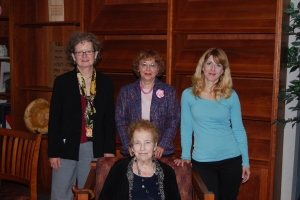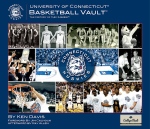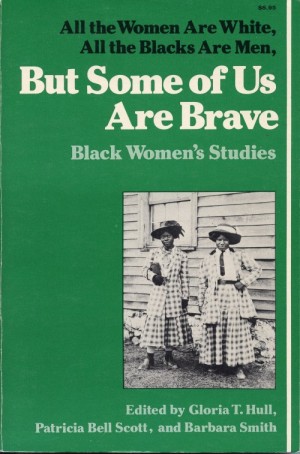December 1 marks World AIDS Day, first established by the World Health Organization 20 years ago to raise awareness and focus attention on the global AIDS epidemic. Since the first cases of AIDS were identified in 1981, over 25 million people worldwide have died from AIDS. Worldwide, the number of people currently living with AIDS is 33.4 million, with an estimated one million in the United States.
The Thomas J. Dodd Research Center and the University of Connecticut Libraries are commemorating World AIDS Day with an exhibit on the plaza of Homer Babbidge Library featuring early publications, artists books, poetry, and health reports on HIV and AIDS from the Alternative Press and Human Rights Collections.

World AIDS Day Newsletter, 1994. From the Human Rights Internet Collection, Thomas J. Dodd Research Center, University of Connecticut Libraries.
In 2008, 2.7 million people became newly infected with HIV. Since 1996, funding for the response to AIDS in low- and middle-income countries rose from US$300 million annually to US$10 billion in 2007. This increase in financing for HIV programs in low- and middle-income countries is beginning to bear fruit, with many countries making major progress in lowering AIDS deaths and preventing new infections. Progress remains uneven, however, and the epidemic’s future is still uncertain, underscoring the need for intensified action to move towards universal access to HIV prevention, treatment, care, and support. There have been many successes in the AIDS response in recent times including increases in HIV treatment coverage and prevention of mother-to-child transmission services, and an indication of decline in HIV incidence in some regions. However, at the moment globally five people are becoming infected with HIV for every two people accessing treatment.
In the countries most heavily affected, HIV has reduced life expectancy by more than 20 years, slowed economic growth, and deepened household poverty. In sub-Saharan Africa alone, the epidemic has orphaned nearly 12 million children aged under 18 years. The natural age distribution in many national populations in sub-Saharan Africa has been dramatically skewed by HIV, with potentially perilous consequences for the transfer of knowledge and values from one generation to the next. In Asia, where infection rates are much lower than in Africa, HIV causes a greater loss of productivity than any other disease, and is likely to push an additional 6 million households into poverty by 2015 unless national responses are strengthened (Commission on AIDS in Asia, 2008). According to the United Nations Development Programme (UNDP), HIV has inflicted the “single greatest reversal in human development” in modern history (UNDP, 2005).
At the same time, the epidemic has heightened global consciousness of health disparities, and brought forth unprecedented action to confront some of the world’s most serious development challenges. No disease in history has prompted a comparable mobilization of political, financial, and human resources, and no development challenge has led to such a strong level of leadership and ownership by the communities and countries most heavily affected. In large part due to the impact of HIV, people throughout the world have become less willing to tolerate inequities in global health and economic status that have long gone unaddressed.
Source: UNAIDS, The Joint United Nations Programme on HIV/AIDS











